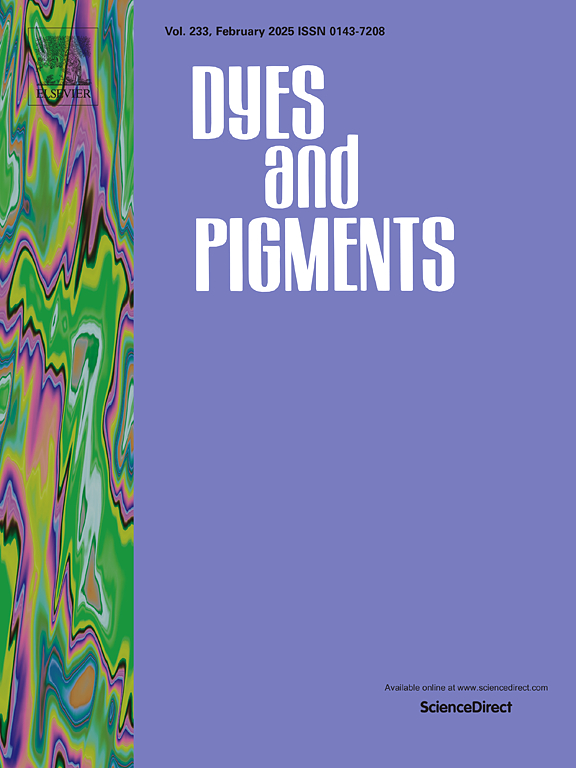Redox-programmed theranostic system with instant Response: Light-Triggered methylene blue activation driving self-amplified PDT through glutathione depletion and synergistic chemotherapy
IF 4.1
3区 工程技术
Q2 CHEMISTRY, APPLIED
引用次数: 0
Abstract
Photodynamic therapy (PDT) has emerged as an attractive therapeutic modality owing to its non-invasiveness and precise spatiotemporal controllability. However, the inherent limitations of monotherapy and the tumor recognition properties of conventional photosensitizers have significantly limited their therapeutic efficacy. In this study we developed Sanger-MB-HCPT, a photoactivatable theranostic prodrug integrating methylene blue (MB) and hydroxycamptothecin (HCPT) through rational molecular engineering. The system features: 1) photocleavable FDNP group enabling fluorescence recovery and precise MB activation under 660 nm irradiation, addressing metabolic instability in conventional photosensitizers; 2) disulfide linkages mediating tumor-selective HCPT release through glutathione (GSH) responsiveness. Notably, GSH consumption during drug liberation concurrently attenuates ROS scavenging, establishing a self-amplifying mechanism for enhanced PDT efficacy. This dual-activation strategy achieves spatiotemporally controlled ROS generation and chemotherapy, with in vivo studies demonstrating 89.7 % tumor suppression through synergistic effects. This integrated approach establishes a novel therapeutic strategy for precision oncology, effectively overcoming current limitations in conventional PDT while enabling real-time treatment visualization.
具有即时反应的氧化还原编程治疗系统:光触发亚甲蓝激活通过谷胱甘肽耗竭和协同化疗驱动自放大PDT
光动力疗法(PDT)因其非侵入性和精确的时空可控性而成为一种有吸引力的治疗方式。然而,单一疗法的固有局限性和传统光敏剂的肿瘤识别特性极大地限制了它们的治疗效果。本研究通过合理的分子工程技术,开发了整合亚甲基蓝(MB)和羟喜树碱(HCPT)的光激活治疗前药Sanger-MB-HCPT。该系统具有以下特点:1)可光裂解的FDNP基团,可在660 nm照射下实现荧光恢复和精确的MB激活,解决了传统光敏剂代谢不稳定的问题;2)二硫键通过谷胱甘肽(GSH)应答性介导肿瘤选择性HCPT释放。值得注意的是,在药物释放过程中,谷胱甘肽的消耗同时减弱了ROS的清除,建立了一种增强PDT功效的自我放大机制。这种双激活策略实现了时空可控的ROS生成和化疗,体内研究表明,通过协同作用抑制89.7%的肿瘤。这种综合方法为精确肿瘤学建立了一种新的治疗策略,有效地克服了目前传统PDT的局限性,同时实现了实时治疗可视化。
本文章由计算机程序翻译,如有差异,请以英文原文为准。
求助全文
约1分钟内获得全文
求助全文
来源期刊

Dyes and Pigments
工程技术-材料科学:纺织
CiteScore
8.20
自引率
13.30%
发文量
933
审稿时长
33 days
期刊介绍:
Dyes and Pigments covers the scientific and technical aspects of the chemistry and physics of dyes, pigments and their intermediates. Emphasis is placed on the properties of the colouring matters themselves rather than on their applications or the system in which they may be applied.
Thus the journal accepts research and review papers on the synthesis of dyes, pigments and intermediates, their physical or chemical properties, e.g. spectroscopic, surface, solution or solid state characteristics, the physical aspects of their preparation, e.g. precipitation, nucleation and growth, crystal formation, liquid crystalline characteristics, their photochemical, ecological or biological properties and the relationship between colour and chemical constitution. However, papers are considered which deal with the more fundamental aspects of colourant application and of the interactions of colourants with substrates or media.
The journal will interest a wide variety of workers in a range of disciplines whose work involves dyes, pigments and their intermediates, and provides a platform for investigators with common interests but diverse fields of activity such as cosmetics, reprographics, dye and pigment synthesis, medical research, polymers, etc.
 求助内容:
求助内容: 应助结果提醒方式:
应助结果提醒方式:


